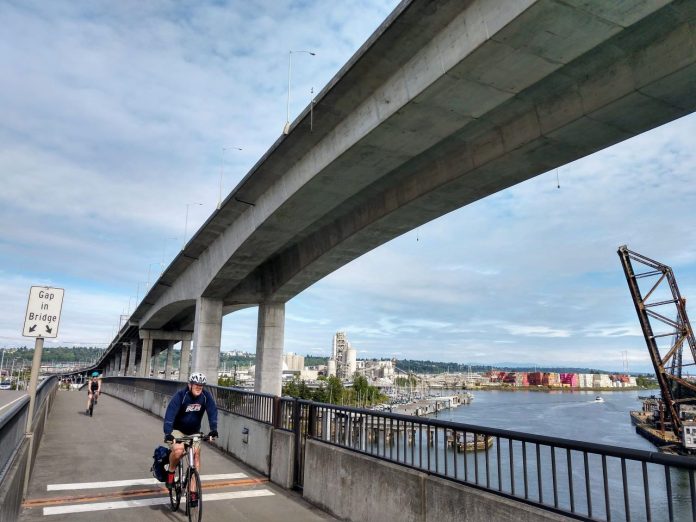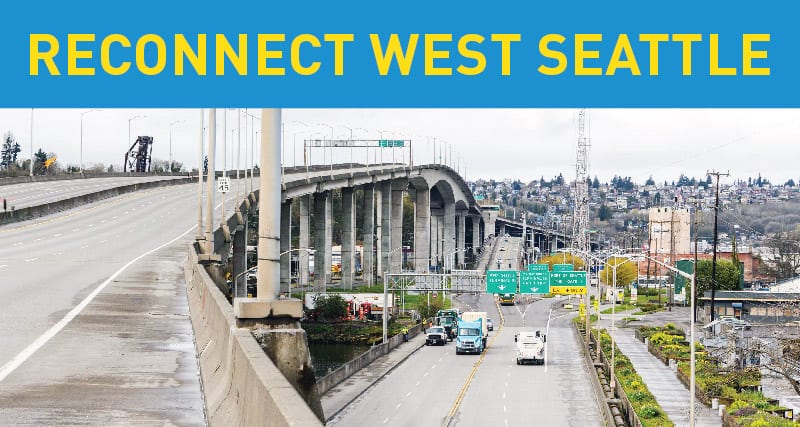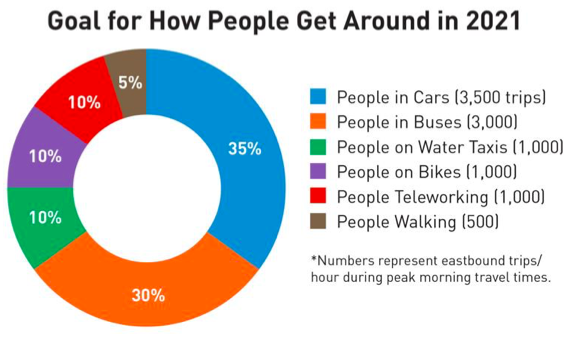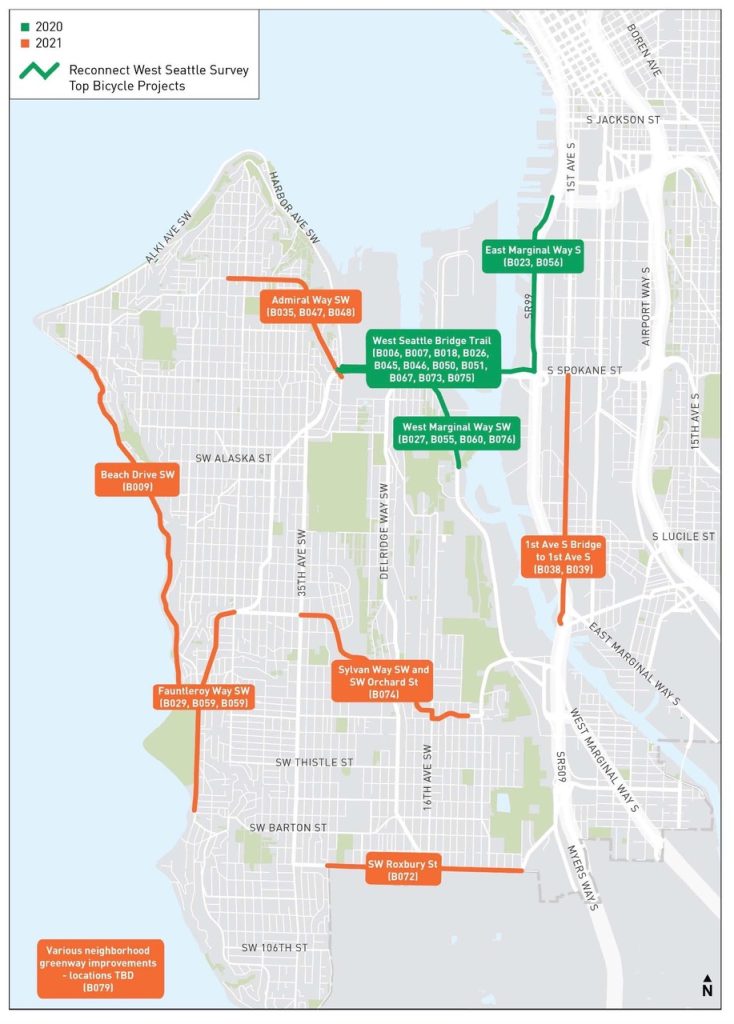
Joining with other Move All Seattle Sustainably (MASS) coalition members, The Urbanist has signed onto a letter co-written by advocates West Seattle Bike Connections, Duwamish Valley Safe Streets, Seattle Neighborhood Greenways, and Cascade Bicycle Club demanding that the Seattle Department of Transportation (SDOT) increase investment in bike improvements as part of its Reconnect West Seattle plans.
While we appreciate the inclusion of many of our suggestions in the Reconnect Seattle survey we are disappointed to see that the city plans to implement only a handful of spot improvement projects, spending less than $1 million [up to 10 projects at less than $100,000 each.] This is woefully inadequate to attract the numbers of new bikers you are planning for in a manner that will sustain interest in cycling to maintain the bike mode share over the medium or long term.
Excerpt from a letter to SDOT from West Seattle Bike Connections, Duwamish Valley Safe Streets, Seattle Neighborhood Greenways, and Cascade Bicycle Club
The letter was submitted to SDOT in response to initial plans laid out by the agency for how the $160 million to $225 million in funding may be spent on the West Seattle Bridge program, which includes bridge monitoring and testing, emergency repairs, planning and design, and traffic and travel mitigation projects to be undertaken during the closure of the high-rise bridge as the City seeks to determine whether to repair or replace the structure.

Earlier this summer, SDOT completed a Reconnect Seattle survey as part of its community engagement. Nearly 17,000 survey responses were collected and that data was used to inform the Reconnect West Seattle draft plan, which was released by SDOT in July.
The crux of the advocates’ argument for increasing funding for bike improvements, which also benefit riders of other mobility devices like motorized wheelchairs and scooters, is that such the funding increase is necessary for the agency to meet the ambitious goals it has set for cycling and rolling as modes of transportation in West Seattle. While Alki Beach might be known as one of the best places in Seattle to coast on a cruiser bike, research shows that cars are by far the dominant mode of transportation in West Seattle, accounting for about 81% of trips taken in 2019.

The City estimates biking only accounted for about 1% of West Seattle trips in 2019; however, SDOT is hoping to boost those numbers to 10% by 2021 as part of an effort to cut car traffic in half (and then some) to adapt to the reality of the West Seattle Bridge closure.

Advocates believe that more significant improvements to bike facilities are necessary in order to attain those target numbers. They are advocating that 1% of the program budget to be allocated for bike facility improvements, which would factor out to $1.6 million to $2.25 million.
“The proposed investment is not proportional to what is planned for bus and water taxi service, or to what has already been spent on measures for car and truck traffic detour routes… Target mode share increases for the West Seattle Water Taxi and for biking are equal, yet the proposal makes threefold investments in the water taxi,” argued the advocates in their letter to SDOT.
Back in April, the coalition presented to SDOT a list of the improvements they felt would be most crucial to undertake to ensure cyclists’ safety and comfort on the road. Unfortunately, the current $1 million is not enough to cover what advocates state are “the bare bones essential investments needed to create a connected, protected network of bikeways through West Seattle, Georgetown and SODO.”
Currently, SDOT proposes funding 10 “spot improvements,” which advocates have countered “will not do the job.”

West Seattle Bike Connections and its allies had pushed a much more ambitious and connected map of improvements in an earlier advocacy push in May. South Park and Georgetown would woven into that vision, while they’re left off the Reconnect top ten list. That omission is glaring; West Seattle traffic detours have funnel traffic into South Park, Georgetown, and Delridge–communities already beset with high asthma rates, pollution, and environmental racism.
“This is a challenge felt by residents and workers not just in West Seattle, but in the neighboring communities, including South Park and Georgetown,” the coalition writes. “Cut-through traffic has increased sharply in these neighborhoods in the last several months, bringing with it safety risks to residents walking and biking in these neighborhoods–which already suffer from lack of sidewalks and safe, dedicated bikeways. Another issue is increased pollution in communities that have already, for generations, borne the brunt of environmental impacts in Seattle.”
In addition to funding infrastructure improvements, advocates are demanding investment in programming that would help make cycling in West Seattle accessible to people of all ages, abilities, languages, ethnicities, genders and races. Programmatic ideas proposed in the letter include:
- Supporting low-income bike riders with subsidies or loans for bikes and bike maintenance;
- On-trail activations such as via “trail ambassadors” to support new riders with routine guidance, etc;
- Provision for high capacity, covered, secure bike parking hubs in key downtown locations and transit hubs;
- Maps and routing information in multiple languages.
- Bike maintenance and bike education training targeting communities with historically less access to those skills.
The Urbanist has endorsed this vision for biking as a sustainable, affordable, and healthy mode of transportation for West Seattleites and the investment that entails. Hundreds of millions will be poured into maintaining car capacity on the West Seattle Bridge in the next few years. In that environment, finding a few million more for bicycling infrastructure would be a drop in the bucket, and it would pay larger dividends.
The coalition’s letter rightly pointed to the Alaskan Way Viaduct Closure (dubbed the Seattle Squeeze) as evidence West Seattleites can shift modes to biking, but they need the proper encouragement and investment.
“During the SR99 Viaduct/Tunnel transition in January 2019, West Seattleites proved that they would use bikes for commuting across the Spokane Street Bridge, even on dark, cold January evenings,” the letter states. “With our active encouragement, West Seattleites added more than 1,000 bike trips per day across the bridge above typical January counts. Increased bike trips exceeded additional Water Taxi trips, despite the large expenses made for increased water taxi service. Unfortunately, the city made no effort to improve conditions for biking. Consequently, after the emergency, the numbers biking fell back to the usual winter numbers. Sustaining a shift to biking requires investment.”
SDOT has set today (August 26th) as the last day to comment on its initial ten project list at WestSeattleBridge@seattle.gov or by calling 206-400-7511. You can also contact Mayor Jenny Durkan by emailing jenny.durkan@seattle.gov or calling 206-684-4000. Likely more opportunities to comment will pop up down the line.
Natalie Bicknell Argerious (she/her) is a reporter and podcast host at The Urbanist. She previously served as managing editor. A passionate urban explorer since childhood, she loves learning how to make cities more inclusive, vibrant, and environmentally resilient. You can often find her wandering around Seattle's Central District and Capitol Hill with her dogs and cat. Email her at natalie [at] theurbanist [dot] org.

